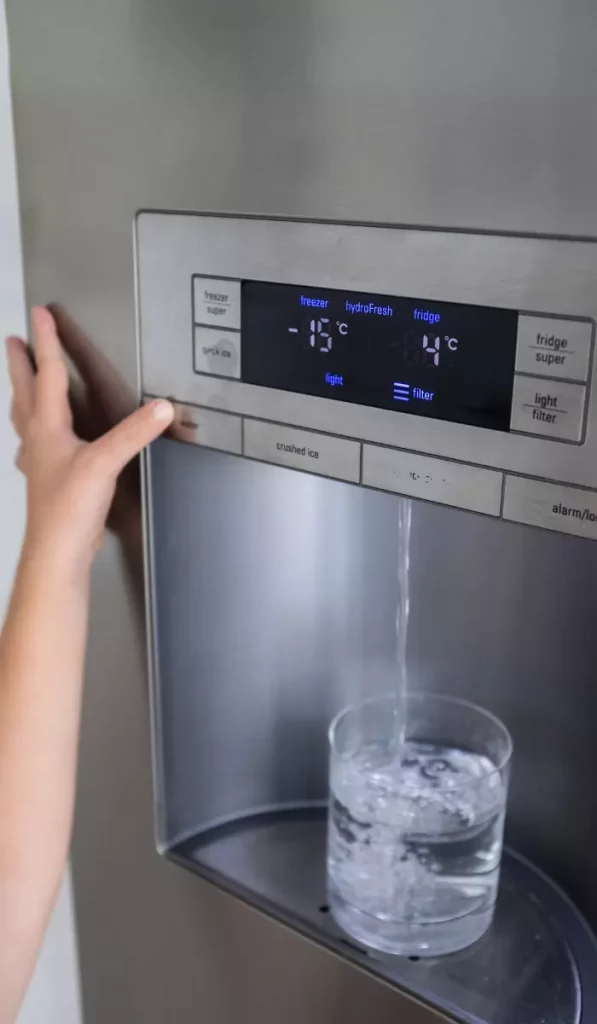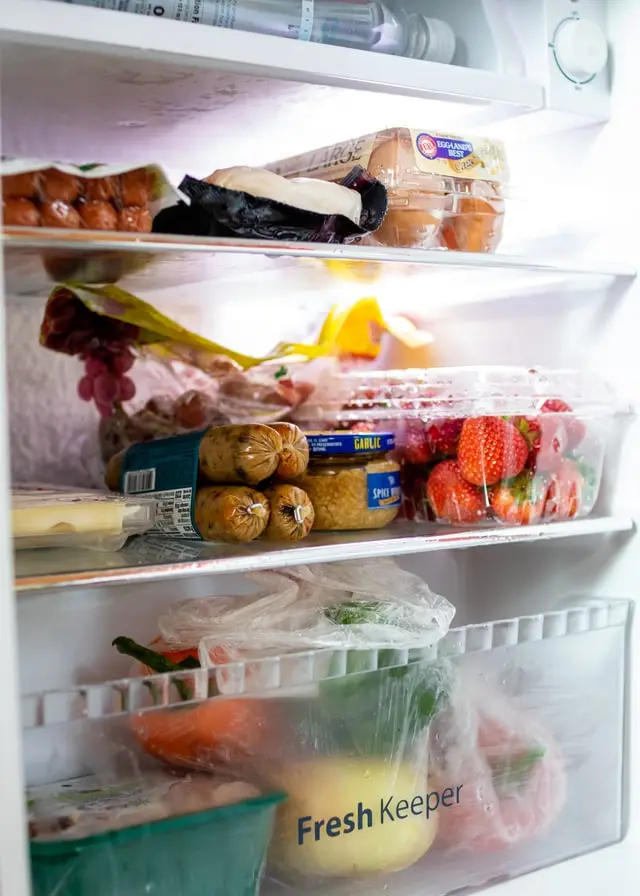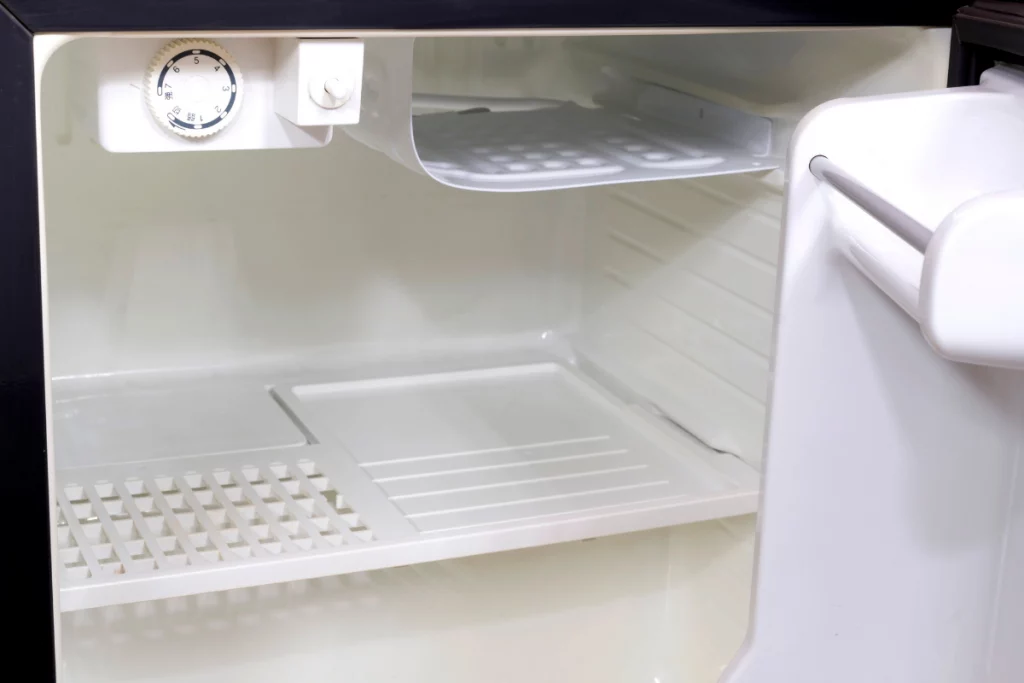When it comes to preserving the freshness and flavor of our food, the importance of correctly setting our fridge’s temperature cannot be understated. Whirlpool, a renowned household name, offers a user-friendly temperature setting range of 1 to 8 in many of its refrigerator models. But what does each setting actually mean? How can one optimize these settings to ensure food safety, quality, and energy efficiency? Let’s dive in.
Key Takeaways
- Understanding the Numbers: Settings 1 and 8 represent the warmest and coldest points, respectively. The mid-range numbers provide nuanced temperature adjustments.
- Daily Use Sweet Spot: For many households, settings 4 or 5 hit the mark, keeping the internal temperature around the recommended 37°F to 40°F.
- Adapting to Seasons: Your fridge’s performance is affected by external temperatures. Winter might call for settings 1-3, spring and fall for 4-6, and summer, with its heat, might require settings 7 or 8.
- Myths Debunked: A higher number doesn’t always mean more energy consumption. Seasonal changes and the fridge’s contents often dictate the most energy-efficient setting.

Whirlpool Fridge Temperature Settings 1-8: What Each Setting Means
To navigate the temperature settings of a Whirlpool fridge effectively, it’s essential to understand the underlying meaning of the numbers:
- Setting 1: The warmest setting, suitable for conditions when the ambient temperature is cooler, such as during winter months or in air-conditioned environments.
- Setting 8: The coldest setting, ideal for very hot seasons or when the fridge is heavily loaded.
The intermediate settings, from 2 to 7, offer incremental temperature decreases, allowing you to fine-tune the cooling level based on your specific needs.
Optimal Settings for Everyday Use
While the optimal setting can vary based on several factors, for most households:
- Setting 4 or 5: These mid-range settings generally maintain the fridge’s internal temperature around the recommended 37°F (2.8°C) to 40°F (4.4°C), ideal for a variety of perishables.
When to Use the Lower Settings (1-3)
The lower settings are warmer and might seem counterintuitive. However, they have their moments:
- Reduced Energy Consumption: In cooler ambient temperatures, setting 1 to 3 can maintain safe storage temperatures while conserving energy.
- Defrosting: If you’re planning to defrost frozen items in the fridge compartment, a lower setting can provide a gentler thawing process.
- Light Loads: When the fridge isn’t heavily stocked, a lower setting can prevent overcooling and drying out of stored items.
Mid-Range Settings (4-6): The Common Ground
These are the “comfort zone” settings for many households:
- Balanced Cooling: These settings ensure the fridge’s temperature remains in the safe zone, between 37°F and 40°F.
- Versatility: Suitable for a mix of dairy, vegetables, meats, and beverages without requiring constant adjustments.
- Adapting to External Factors: Useful for minor adjustments when external temperatures fluctuate.
Higher Settings (7-8) and Their Uses
Turning the dial towards the colder end has its specific applications:
- High Ambient Temperatures: During hot summer months, these settings help maintain safe storage temperatures.
- Heavy Loads: Planning a party or stocking up for the week? Higher settings ensure the fridge maintains its cool despite the added load.
- Preserving Highly Perishable Items: Some items, like certain seafood or meats, require colder temperatures to remain fresh.

Adjusting for Seasons and External Temperatures
When we think about our household appliances, we often forget that they, too, are impacted by the ever-changing dance of the seasons. Just like how you wouldn’t wear a sweater in the scorching summer or a tank top during a chilly winter day, your fridge, believe it or not, also needs seasonal adjustments. The temperature settings of your fridge are not meant to be static, and understanding this dynamic can greatly enhance its efficiency.
Winter:
Winter is a season of contrasts. While we wrap ourselves in layers and enjoy the warmth indoors, the external cold provides a natural refrigeration effect. This means that during winter months, your fridge enjoys a bit of a break. It isn’t battling against high external temperatures to keep your food cold. Because of this natural advantage, it’s recommended to adjust the temperature setting to a milder range, between 1 to 3. This ensures that the fridge isn’t overcompensating and freezing your items. It’s also a smart energy-saving move; there’s no need to keep the fridge working overtime when nature is lending a helping hand.
Spring/Fall:
Spring, with its blossoming flowers, and Fall, with its crisp air and falling leaves, are transitional seasons. They neither have the biting cold of winter nor the intense heat of summer. The external temperatures during these seasons are moderate, making it an optimal time for your fridge to function in its mid-range settings. A setting of 4 to 6 is typically ideal for these months. Such an adjustment ensures that the fridge maintains a consistent internal temperature, safeguarding the freshness of your groceries. And with the bounty of produce available in these seasons—be it the fresh berries of spring or the pumpkins in fall—you’d want the optimal conditions for storage.
Summer:
Summer days bring to mind sunbaths, beach trips, and picnics. But while we relish the warmth, our fridges are grappling with it. High external temperatures mean that the fridge’s cooling system has to work harder to maintain a steady internal climate. During these sizzling months, especially when heatwaves are making headlines, a setting of 7 or 8 is recommended. This ensures that the interior remains cool, preserving the quality and safety of stored food. Moreover, summer often means more frequent openings of the fridge door—be it for a cold drink or an ice cream snack—further necessitating the need for cooler settings.
Seasonal adjustments in temperature settings are not just about maintaining the quality of food but also about enhancing energy efficiency. So, the next time the seasons shift, remember that a small tweak in your fridge’s settings can make a substantial difference in its performance.

Common Misconceptions about Fridge Temperature Settings
It’s easy to misunderstand fridge settings, leading to some common myths:
- “Higher number means more energy consumption”: Not always. In hotter conditions, a higher setting might be necessary to maintain safe storage temperatures. Running a fridge too warm can be a health risk and might lead to food spoilage, wasting both food and the energy used to store it.
- “One setting fits all year round”: As seasons change, so should your settings. Adapt to ensure consistent temperatures inside.
- “The fridge feels cold, so it must be fine”: Feeling is subjective. A fridge thermometer is an inexpensive tool that offers an objective measure.
Conclusion
Your Whirlpool fridge, with its range of 1 to 8 temperature settings, offers versatility to cater to varying needs. By understanding and appropriately adjusting these settings, you can ensure food safety, enhance energy efficiency, and even extend the lifespan of your fridge. So, the next time you reach for that temperature dial, you’ll be doing so with informed confidence.




